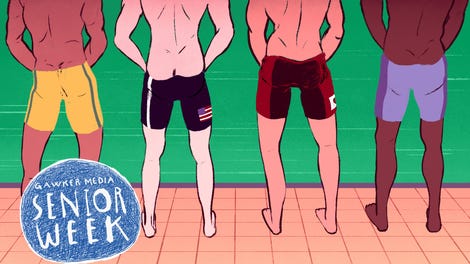I thought it was because of that chemical to see if someone peed.
Didn’t they, on the first day of greenage, admit they hadn’t gotten the chemicals required in the rush up to getting everything finished for the opening? I can’t remember if I read it? Or heard it on the news maybe?
Which made all the following days excuses the more entertaining, to me!
(I stayed in a resort in Bali many years ago, where the new pool went green. They had apparently poo poo ed the idea that they’d need all these chemicals to maintain it! They didn’t close it, but we stopped swimming in it- the ocean was right there! A couple days later a truck pulled up with bags of what looked like ash? (I could be very wrong!) And they proceeded to dump an ungodly amount of this into the pool. I was astounded that they thought putting all this stuff in, bags and bags of it, could possibly change it back! And then it did! Suddenly it just started to change colour and went right back to amazing and clear! It was like a magic trick! I wasn’t about to swim in the pool after that though!)
Charcoal? Activated charcoal? A great adsorbent.
I realize Rio de Janiero has a lot of poor people, but it has rich and midde class people too. And hotels and schools and stuff. There has to be a frickin’ pool supplies store or twelve.
So the hydrogen peroxide neutralized the chlorine, and there were “organic compounds” growing in the water, but Baghdad Bob says the water was safe. Only the IOC won’t send a WaPo reporter the microbiology reports to back that up. OK, then, all is well!
I didn’t say they couldn’t afford it! I said, they’d delayed the purchase in the focus to ‘just get things finished’ and let this purchase slide.
So nobody working for the Olympics can get in their damn car and go to the pool store? ![]()
It doesn’t take that long to go to the pool store and say “Hey, gimme all the (insert chemical) you have. Load it into my truck.” I guess in Rio de Janiero you’d be better off saying this in Portuguese, but that’s the idea.
Likely Sodium Bicarbonate - Baking soda. When I started reading elbows post, I was expecting it to end with, “and the pool stayed milky white for days.”
I find the hydrogen peroxide story a little unlikely. Unless they had dumped gallons of the stuff, there wouldn’t have been enough to “neutralize the chlorine”, whatever that means.
Now I’m curious, could anyone tell me what Cl[sub]2[/sub] + O[sub]2[/sub] would reduce to? I’m thirty-mumbly years outside of High school chemistry.
I bet the “We forgot to add chlorine” story is the most likely. Even without chlorine treatment, an unused pool will look clear due to the filters. As soon as people start using it and sloughing off dead skin cells, giving the filters something to do, the water will turn green in a couple of days in a temperate North Carolina environment. I’d hate to see how quickly it’d turn green in sub-tropical Rio.
Remember kids, check your chemicals twice a day, and shock once a week.
Based on my limited experience with pools, this is one candidate.
However, I also read that some people will put diatomaceous earth into water, with much the same effect as the charcoal someone else suggested. It can pick things out of the water and increase the efficiency of the pool filter (right up until it clogs the filter altogether). Or so I remember hearing.
I have no idea if they used peroxide or not, but in a pool, I’d expect it to be used not to remove actual chlorine, but chloramines. These are organic nitrogen-based compounds where the chlorine has bonded. They are far more stable than pure chlorine, but are less effective sterilizers (per unit of concentration) and also more irritating to people. (In fact, most of the time when people complain about a chlorine smell in a pool, it’s chloramines they smell.) Many public water utilities use chloramines because of the longer stability, so it’s possible that a recently filled pool would have a higher concentration than desired. It’s also possible that an over-used pool would develop high concentrations as chlorine binds to waste products from swimmers.
Anyway, the fix for chloramines is very high levels of an oxidizer - the shock that you mention later in your post. You want to rip that molecule apart entirely, oxidizing the nitrogen-based compounds as well as the chlorine. This can be achieved through very high levels of chlorine (20 ppm instead of the usual 3-5 ppm) or with peroxide. So the chemical reaction is more like H2ClN + H202 -> Cl2 + N02 + H2O. (And yes, I’ve totally failed to balance the equation.)
The story says they dumped 160 liters of hydrogen peroxide in, or about 42 gallons. So quite a bit.
